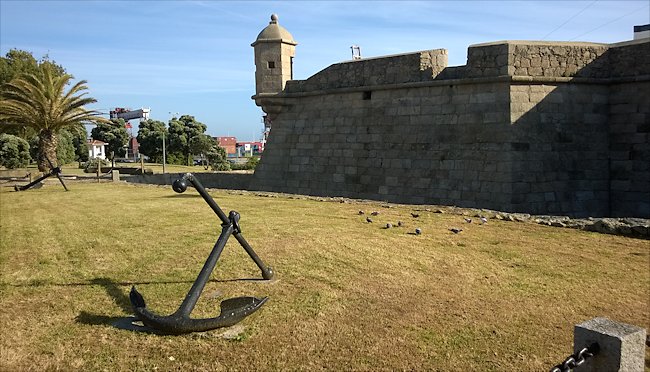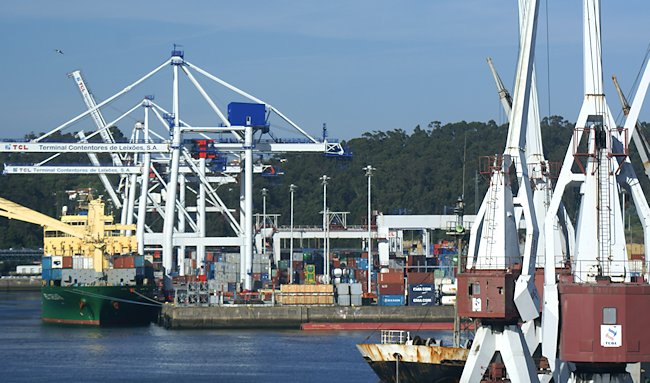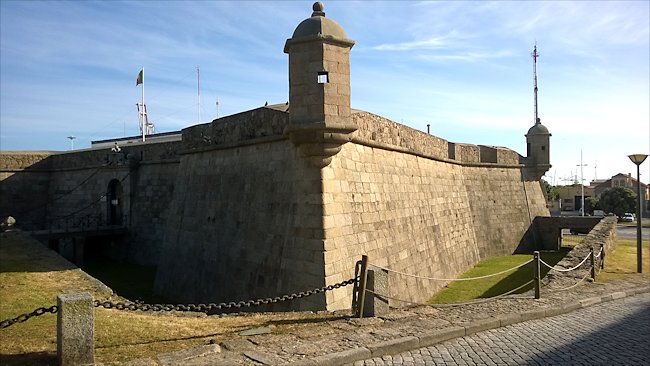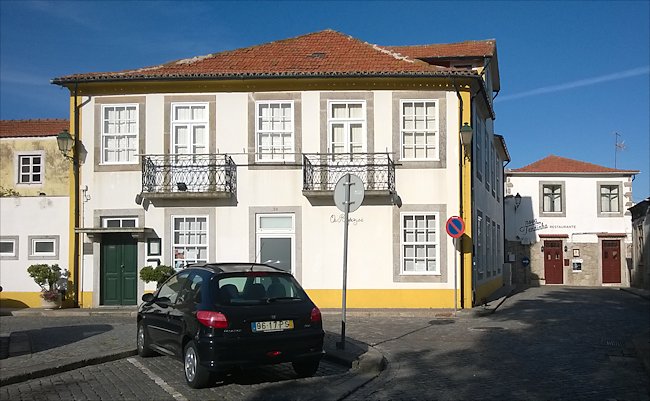Forte de Leca da Palmeira
The Forte de Leca da Palmeira is the most northern castle of the three coastal fortifications that protect the approach to the harbour of Porto. They are not true castles but rather fortified gun platforms manned by gun crews to fire cannonballs at enemy ships out in the Atlantic Ocean.

The side view of the Forte de Leca da Palmeira and one of its watchman towers.
Construction work began on the fort in 1638 on order of King John IV of Portugal. It took a long time complete. The Portuguese restoration war in 1640 interrupted building work. It wasn't until 1720 that the Forte de Leca da Palmeira was finally complete.
During the Napoleonic wars the fort was temporary occupied by the French. It suffered damage during the liberal wars of 1832 to the warehouses, drawbridge, internal staircase and parapets. This damage was repaired and in 1844 it became one of Porto's customs houses.
When it was built it had a commanding view of the sea. There were no houses, factory buildings or warehouses to block its cannon's field of fire. Now it is surrounded by buildings. Once you had a look around the outside of the castle take time to explore the back streets at the rear of the fort. Here you will find a collection of attractive houses some of which date from the early 1800s.

The Modern container port of Matosinhos which now serves the Porto region
The architectural style of the fort is baroque and most of the walls are made from granite blocks. It has tiered battlements. At the front of the castle that faces the sea there is a lowered gun platform. Behind it there is a higher battlement with another gun platform. This enabled the Portuguese artillery officers to have 2 rows of cannons firing at enemy ships at the same time.
The fort is an elongated star shape with watchtowers built of stone on each corner. There is just enough room inside each watchtower for one man to stand on duty looking out for hostile ships. In the summer they would a provided shade from the scorching sun and in winter offer some protection from the Atlantic gales.
To get to the Forte de Leca da Palmeira you have to cross the Rio Leca river using the bridge by the Mercado shopping centre and tram stop. When you're on the north side of the river just walked back towards the coast along the Avenue Antunes Guimaraes. As this road bends round the corner you will suddenly see the fort.

Each corner of the Fort de Leca da palmeira in Matosinhos has a Baroque style stone watchtower
There is only one entrance into the castle and that is by the large door at the rear. It was protected by a drawbridge that can still be seen today. The entrance is by the road called Largo Castelo.
Before you catch a bus back to Porto city centre continue to walk north up the Avenue Antunes Guimaraes and you will come to another sandy beach. I spent a delightful hour sitting in the beach cafe, soaking up the sun and enjoying a beer whilst watching the waves crash against the shore. The local bus that stops by the beach heading south goes to the Mercado tram stop. From there you can get a fast tram into Porto city centre.

Remember to explore the charming streets behind the Fort de Leca da palmeira
Travel books

